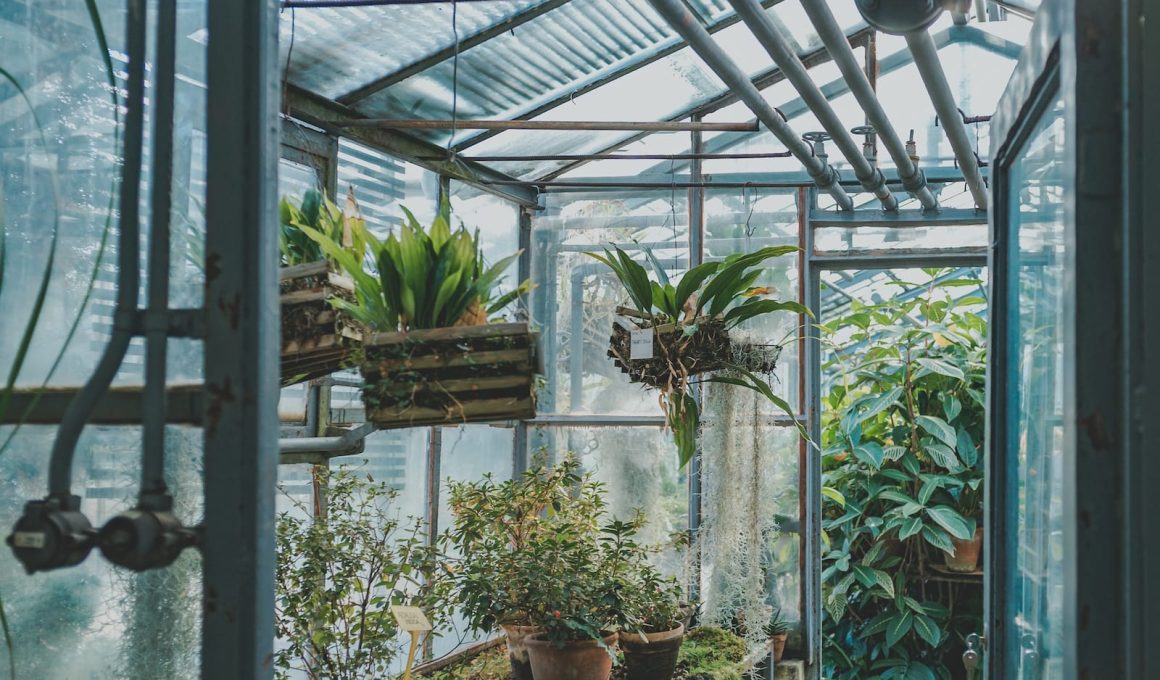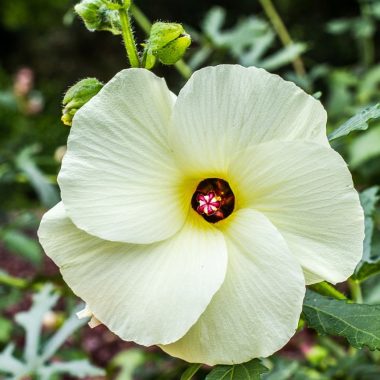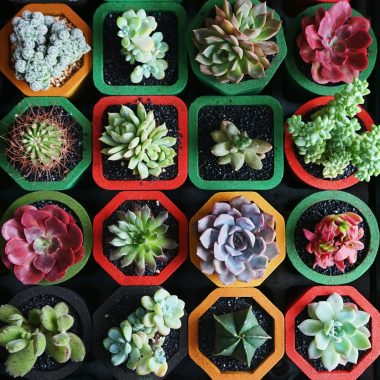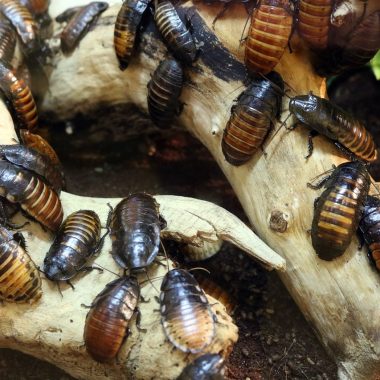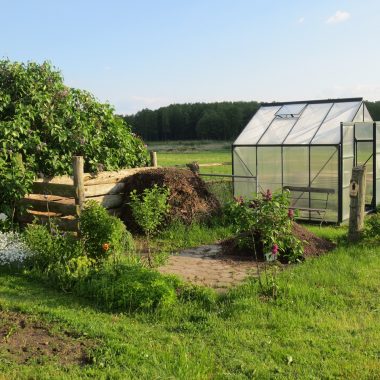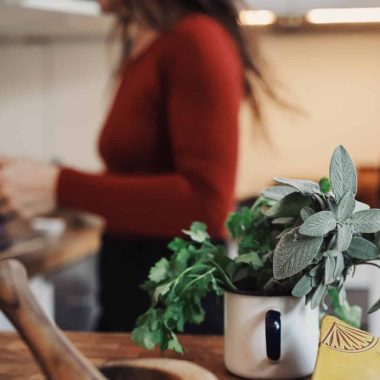Heating your indoor greenhouse brings numerous benefits, enabling you to create an ideal environment for your plants.
Maintaining the right temperature can create a controlled environment, extend the growing seasons, and protect your plants from frost and cold.
Create a Controlled Environment
Heating your indoor greenhouse allows you to have complete control over the temperature inside.
This control is essential for creating the optimal conditions that promote healthy plant growth.
Different plants have specific temperature requirements, and by heating your greenhouse, you can provide the ideal climate for your plants to thrive.
Extend Growing Seasons
With a heated indoor greenhouse, you can extend the growing seasons beyond what is typically possible.
You can start planting earlier in the spring by providing warmth during colder months and continue growing well into the fall.
This extended growing period gives you more time to experiment with different plant varieties and enjoy fresh produce throughout the year.
Protect Plants from Frost and Cold
One of the primary reasons for heating an indoor greenhouse is to protect your plants from frost and cold temperatures.
Cold weather can harm many plants, causing damage or even death.
You can create a sheltered and warm environment by heating your greenhouse shielding your plants from the harsh elements outside.
This protection ensures that your plants stay healthy and continue to grow, even during chilly weather.
Heating your indoor greenhouse provides these benefits and more, helping you create an optimal plant growing environment.
To learn more about how to heat a greenhouse, check out our article on how to heat a greenhouse.
Understanding Temperature Needs
To effectively heat your indoor greenhouse, it’s important to understand the temperature needs of your plants and how to create the ideal environment for their growth.
This includes knowing the optimal temperature range for different plants and understanding the concept of heat zones within your greenhouse.
Optimal Temperature Range for Different Plants
Different plants have varying temperature requirements for optimal growth.
Understanding these temperature preferences is crucial to ensuring the health and productivity of your plants.
Below is a general guideline for the optimal temperature range for common greenhouse plants:
| Plant Type | Optimal Temperature Range (°F) |
|---|---|
| Warm-Season Crops | 70-85 |
| Cool-Season Crops | 60-70 |
| Tropical Plants | 70-90 |
| Succulents | 60-75 |
| Orchids | 60-80 |
It’s important to note that these are general recommendations, and some plants may have specific temperature requirements.
Always refer to the specific care instructions for the plants you are growing to ensure the best results.
For more information on greenhouse basics, check out our article on what is a greenhouse.
Understanding Heat Zones in a Greenhouse
A greenhouse typically has different heat zones based on the proximity to the heat source and the efficiency of heat distribution.
Understanding these zones will help you strategically position your plants to provide them with the appropriate temperature conditions.
- Hot Zone: This zone is closest to the heat source, such as heaters or heating mats. Temperatures in this zone can be higher than the optimal range for some plants. It’s important to avoid placing heat-sensitive plants in this zone.
- Warm Zone: The warm zone is slightly further away from the heat source. Temperatures in this zone are within the optimal range for many plants. It is suitable for most greenhouse plants.
- Cool Zone: The cool zone is the farthest from the heat source. Temperatures in this zone may be lower than the optimal range for some plants. Heat-loving plants should be placed closer to the heat source, while cold-tolerant plants can thrive in this zone.
By understanding the heat zones in your greenhouse, you can strategically position your plants according to their temperature needs.
This will help ensure that each plant receives the appropriate level of warmth for optimal growth.
For more information on greenhouse temperature management, check out our article on how to heat a greenhouse.
Understanding the temperature needs of your plants and the heat zones in your greenhouse is essential for effectively heating your indoor greenhouse.
Providing the right amount of warmth can create a favorable environment for your plants to thrive and achieve successful cultivation.
Heating Options for Indoor Greenhouses
When it comes to heating your indoor greenhouse, several options exist. Each heating method has its own advantages and considerations.
Let’s explore three common options: electric, propane, and radiant heaters.
Electric Heaters
Electric heaters are a popular choice for indoor greenhouses due to their ease of use and efficiency.
These heaters utilize electricity to generate heat, making them convenient for those with access to electrical outlets.
Electric heaters are available in various sizes and types, including convection, fan, and infrared heaters.
One of the advantages of electric heaters is their ability to provide consistent and even heating throughout the greenhouse.
They are also generally safer to use compared to other heating options, as they do not produce open flames or emit harmful gases.
However, it’s important to ensure that your electrical system can handle the power requirements of the heater you choose.
Propane Heaters
Propane heaters are another popular choice for heating indoor greenhouses, especially in areas where electricity may not be readily available.
These heaters utilize propane gas as a fuel source to generate heat. Propane heaters come in different types, such as radiant heaters, convection heaters, and forced-air heaters.
One of the main advantages of propane heaters is their portability.
They can be easily moved around and placed in different areas of the greenhouse as needed.
Propane heaters are also known for their ability to produce high heat output, making them suitable for larger greenhouses.
However, it’s important to ensure proper ventilation when using propane heaters to prevent carbon monoxide gas accumulation.
Radiant Heaters
Radiant heaters are a specific type of heater that emits heat through infrared radiation.
These heaters work by directly heating objects and surfaces in the greenhouse rather than heating the air.
Radiant heaters are known for their energy efficiency and ability to provide targeted heating.
One of the advantages of radiant heaters is their ability to warm up objects and plants in the greenhouse quickly.
They are also ideal for situations where you need to heat specific areas or zones within the greenhouse.
However, it’s important to note that radiant heaters may not be as effective in larger greenhouses or in situations where air circulation is limited.
When choosing a heating option for your indoor greenhouse, consider factors such as the size of your greenhouse, your heating requirements, and any safety considerations.
It’s recommended to consult with a professional or do further research to determine the most suitable heating option for your specific needs.
Remember, efficient heating of your indoor greenhouse is essential to create optimal plant growth conditions.
By selecting the right heating option and ensuring proper insulation and ventilation, you can conquer the chill and provide a cozy environment for your plants to thrive.
Tips for Efficiently Heating Your Indoor Greenhouse
To ensure the optimal growth of your plants in an indoor greenhouse, it’s essential to implement efficient heating methods.
Here are some tips for heating your indoor greenhouse effectively:
Insulation and Sealing
Proper insulation and sealing are crucial for preventing heat loss and maintaining a consistent temperature within your greenhouse.
Insulate the walls and roof with materials such as bubble wrap, polycarbonate panels, or greenhouse plastic.
This helps to trap heat inside and prevent cold drafts from entering.
Ensure that windows, doors, and gaps are properly sealed to minimize heat leakage.
To further enhance insulation, consider using double-glazed windows or installing thermal curtains to provide an extra layer of protection against temperature fluctuations.
Minimizing heat loss can create a more energy-efficient environment for your plants.
Proper Ventilation
While insulation is important for heat retention, proper ventilation is equally crucial to maintain air circulation and prevent excessive humidity.
Good airflow helps regulate temperature and prevents the buildup of condensation, which can lead to mold and fungal growth.
Install ventilation systems such as exhaust fans or vents that can be opened and closed as needed.
This allows you to control the airflow and adjust the temperature inside the greenhouse.
Finding the right balance between insulation and ventilation is essential to create a healthy environment for your plants.
Using Heat Mats and Thermostats
Heat mats and thermostats are valuable tools for maintaining consistent temperatures within your greenhouse.
Heat mats placed beneath seed trays or pots provide bottom heat, promoting germination and root development.
Thermostats can control them to maintain the desired temperature range for your plants.
Invest in a reliable digital thermostat that allows you to set specific temperature parameters and monitor the greenhouse’s heat levels.
This ensures that your plants are not exposed to excessive heat or cold.
Combine the use of heat mats and thermostats to create a warm and nurturing environment for your plants.
By implementing these tips for efficiently heating your indoor greenhouse, you can create an ideal environment for your plants to thrive.
Remember to regularly monitor the temperature, adjust settings as needed, and provide adequate care to ensure the successful growth of your greenhouse plants.
For more information on greenhouse-related topics, check out our articles on what is a greenhouse and how to heat a greenhouse.
Safety Considerations
When heating your indoor greenhouse, it’s important to prioritize safety to ensure the well-being of both your plants and yourself.
Here are some essential safety considerations to keep in mind:
Fire Safety Measures
Greenhouse heating devices can pose a fire hazard if not used properly. To minimize the risk of fire, follow these safety measures:
- Keep flammable materials away from heating equipment, such as curtains, paper, and gasoline.
- Maintain proper clearance around heating devices to prevent overheating. Follow the manufacturer’s recommendations for safe distances.
- Avoid using extension cords with high-wattage heating devices. Instead, opt for direct connections to grounded outlets.
- Install smoke detectors in your greenhouse and regularly test their functionality.
- Have a fire extinguisher readily available and ensure everyone knows how to use it.
- Create an emergency plan that includes evacuation routes and a designated meeting point.
Carbon Monoxide Detection
Some heating methods, such as propane heaters, can produce carbon monoxide (CO) gas, which is colorless and odorless but highly toxic.
To prevent CO poisoning, take the following precautions:
- Install a carbon monoxide detector in your greenhouse. Place it at a height where it can effectively detect any accumulation of gas.
- Ensure proper ventilation to allow fresh air circulation and eliminate any buildup of CO gas.
- Regularly inspect and maintain your heating equipment to ensure it is functioning correctly and not producing excessive amounts of CO gas.
- Never use fuel-burning appliances intended for outdoor use inside your greenhouse.
Regular Maintenance and Inspections
Regular maintenance and inspections are essential for the safe operation of your heating system.
Follow these guidelines:
- Clean and inspect heating devices regularly to remove any dust, debris, or potential obstructions.
- Check electrical connections for any signs of wear, damage, or loose wires. If you notice any issues, consult a qualified electrician.
- Monitor the performance of your heating system and address any unusual noises, fluctuations in temperature, or malfunctions promptly.
- Schedule annual inspections with a professional to ensure your heating system is in optimal condition and operating safely.
By implementing these safety considerations, you can enjoy the benefits of a heated indoor greenhouse while minimizing potential risks.
Remember to prioritize the safety of both your plants and yourself to create a nurturing environment for your green oasis.
